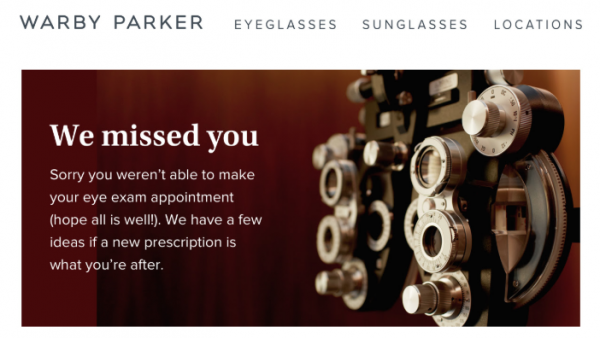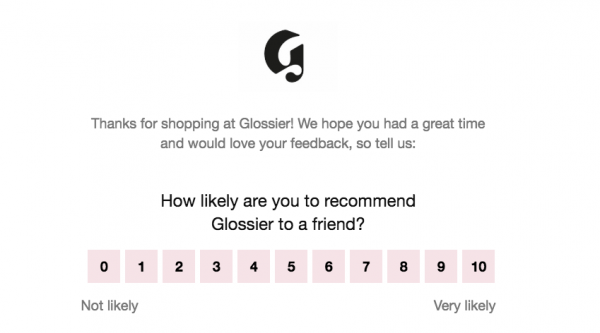
This story is part of a group of stories called

Brands send emails. Brands send, by some estimates, more than half of all the emails that are sent worldwide.
The cashier at Urban Outfitters recently asked me for my email when I bought something in a physical store, so that the company might send me emails every day, which I was already getting. Rihanna’s Savage X Fenty brand, I’m sorry to say, sends an egregious number of emails, and it’s not just me noticing. I have eaten at the fast casual Mediterranean restaurant Cava only one time, in a city I don’t live in, almost a year ago, and have received an email every week, like clockwork, which is actually pretty useful because the subject matter is typically which vegetables are in season.
Brand emails can be controversial. Business Insider ran an article last year about how “Stores ‘bludgeon’ their customers ‘to death’ with emails.” LinkedIn settled a lawsuit for unwanted emails in 2015, paying out $13 million to complainants. Glossier, the cool-girl cult beauty brand, is notorious for its emails, which are sometimes just pictures of bathtubs or goats, and other times are aggressive reminders that the recipient left items in their online shopping cart, and shouldn’t they go back to buy them? As someone on Twitter put it last summer, “glossier needs to cool it w the spam. i gave u my email so u could let me know when ur overpriced items r on sale not for this shit!!!!!!”
(The emails have recently gotten even more cryptic and faux-urgent, and often have subject lines that are just “Oops” or “Testing” or “Last call,” like a double-text you might send to someone who seems to be ghosting you.)
Brands you’ve ignored for a while are fond of shouting “WE MISS YOU!” in their subject lines. Or, as Eliza Brooke described for Racked last year, “trying to dupe people” by putting “FWD:” or “Re:” in the subject line, making it look like the message is coming from someone you’ve intentionally started a conversation with.
Then there’s the follow-up emails. “How did we do?” and a request to evaluate the way a customer service rep handled your question about returning a pair of weirdly shaped jeans. “How did you like your order?” and a request to rate whichever bulk hand-soap you order for pickup from Target. “Re: your eyeballs,” and “We missed you,” when you skip a Warby Parker appointment. “Would you recommend us?” Glossier asked in July, a few weeks after emailing out a set of free downloadable phone wallpapers with the subject line “We made these for you.” How do you feel about us? the brands seem to plead with increasing frequency.
The obvious question is: do you really think we feel anything? The second-most obvious question is: if everyone is doing this, does that mean it works?
In the European Union, there is a law about sending people emails. The General Data Protection Regulation, which went into effect in May 2018, required brands to re-do their email lists and obtain consent to continue corresponding with anyone who hadn’t actively opted in (e.g. they’d been automatically added to the list after making a purchase, or been lightly conned with a pre-checked box).
In the US, however, the 2003 CAN-SPAM (Controlling the Assault of Non-Solicited Pornography and Marketing) Act bans misleading subject lines and requires that brands provide an opt-out message in their emails, but that’s it.
“You’re allowed to legally spam people in America,” Brad Goodfriend, director of marketing at the furniture store France and Son told me. “You can just buy an email list, add them to a list, send emails every single day. But I don’t think it’s a good method. It hurts your click-through rate, your spam rate, and decreases the chances of people actually opening your email.”
“You’re allowed to legally spam people in America.”
(The FTC has published a discouragement of this practice, known as list brokering, warning that these lists are often assembled “using illegal means.”)
All of this arguably unwanted correspondence is actually part of what’s called “relationship marketing.” This is a style of marketing that assumes it is more cost-effective to hold onto a customer than to get a new one, and also takes as a given that the way to hold onto someone is to pop up in their inbox every day. Also, more people use email than use Facebook and Twitter combined. In other words: email is important to brands because email is intimate, and email is cheap.

According to a 2015 study conducted by the Data and Marketing Association, email’s return-on-investment is 38 to 1. And according to Mailchimp, one of the largest email marketing companies, “Email is not dead, and the toolbox has expanded to make it even more compelling to brands.”
Though email might seem old-school and boring, the technology behind email marketing gets more sophisticated — and arguably more obnoxious — all the time. Take, for example, Drip, a customer relationship management (CRM) software company founded in 2013 in the Twin Cities and acquired by Leadpages in 2015. Drip sells brands a back-end automated system that puts individual tags on their email subscribers when they perform certain actions (visiting specific pages of the brand’s website, clicking a link, adding something to a cart, etc.).
Mailchimp offers similar tools, and insists that they work: “With an abandoned cart email series, [our customers] see an average of 34 times more orders per recipient than with bulk email alone.” So, email blasts aren’t actually always email blasts at all. The tags decide who gets which emails and when.
This ability to personalize means… more emails. Dave Charest, director of content at the online marketing company Constant Contact, tells me that two-thirds of brands his company surveyed planned to increase their use of email marketing in the next 12 months, and added that this is great news. Specifically, “The great thing about email is that the potential customer has willingly shared their contact info and invited you to stay in touch!”
While I was writing this story, one of my editors forwarded me a whole bundle of emails she’d gotten from brands in the last few days. Each one was a follow-up email asking about a customer service experience. As it turned out, each conversation was initiated by her! She just loves customer service! And of course, a brand is going to follow up for feedback with someone who emails customer service to ask the weight of a coffee table before she comes to pick it up. (“Well, it’s like, do I need to bring a boy?” she defended herself to me.)
Those pleading “how do you feel about us?” emails are also a product of creeping anxiety about high customer service expectations.
The [Amazon Prime] standard bleeds over into all of our expectations of what we think brands should be doing for us.”
“Businesses have a habit of thinking about the way they compare in their industry, but they need to benchmark against things like Amazon Prime,” says Katherine Kelly, senior director of product marketing at the customer support software company Zendesk. “The [Amazon Prime] standard bleeds over into all of our expectations of what we think brands should be doing for us.” That means everything has to be super-fast, and most customers expect a response within four hours of filing a customer service complaint. They expect to talk to a human being, but they want human beings to have the efficiency of corporations.
Zendesk was founded in Copenhagen in 2007, moved to San Francisco after its series B funding in 2009, and went public in 2014. Last quarter, it had close to $200 million in revenue, 37 percent higher than the same quarter last year. It’s used by well over 100,000 businesses, including Airbnb, Fossil, Birchbox, Dollar Shave Club, Peloton, and even the ACLU.

Brands, Kelly says, want customer support emails that are part of a highly-automated system on the back-end but don’t look automated to you. They want a “conversational” appearance, which serves their goal of maintaining customer loyalty. Everything is direct-to-consumer and subscription now, she points out, and those are relationships you have to tend to with frequent surveys and follow-ups.
Mike Chi, CMO of the wedding registry startup Zola, says his company sends a follow-up email after every customer service interaction. Once a month, the whole company reviews the feedback, “including messages from customers talking about how much they appreciate the follow-up from the team.” (For Zazzle, on the other hand, the reaction to follow-up emails is “truly situational.” Renaud says, frankly, “Whether they appreciate the follow-up is very dependent on the reason for contacting us. But we do find that people appreciate having the opportunity to let us know how things went.”)
According to Constant Contact, the average click-through rate for a brand email is 7 percent, and brands are highly encouraged to offer editorial content (like tips, how-tos, interviews, etc.) in addition to discounts and product recommendations, in order to keep things conversational and helpful — like a friend would be.
When I spoke to France and Son’s Brad Goodfriend, whose name I didn’t make up, he was startlingly frank about how he assumes I, and many like me, feel about furniture. “It’s hard to make people care about furniture on a daily basis,” he said. “We don’t get that many sales from Instagram. Not everyone is really in the mood for furniture all the time. We do see a good amount of revenue attributed to the email.” (France and Son uses a platform called List Track, which works similarly to Drip.) Though all of France and Son’s emails contain “a little bit of salesmanship,” Goodfriend says they also try to provide information about “what’s hot” in interior design. “No one wants to be just sold to every single day.”
“It’s hard to make people care about furniture on a daily basis. We don’t get that many sales from Instagram.
Email is back in fashion, in part because advertising on Instagram has gotten more expensive and less effective, in part because users are turning on platforms Twitter and Facebook (Christopher Best, chief executive of the venture-capital funded newsletter startup Substack, told the New York Times he founded his company in part because he felt “this growing sense of despair in traditional social media”). But largely, I think, because it intertwines so nicely with the strangest consumer trend of our lifetimes, which is the erosion of the divide between commerce and personal interaction.
Take, for example, the success of Girls Night In, the self-care editorial platform best known for its email newsletter — which is a mix of blogging, editor recommendations, and sponsored content — which recently raised $500,000 in a pre-seed funding round. Or Man Repeller, the fashion and beauty site known for its staffers’ enormous Instagram followings and brand deals, which also publishes a highly-designed daily newsletter, and makes the bulk of its revenue from affiliate links and native advertising. Both brands have loyal readers who not only open their emails but love to open their emails, and identify as fans of their emails, and will pay to hang out with them in real life because of their emails.
In the inbox, the line between personal correspondence and sales pitch gets blurrier and blurrier. Notes from your friends — the brands you like — are beautifully designed and full of content you actually like and written in a voice that is not so different from the notes you receive from your other friends — your actual friends.
When Meredith Schwartz, VP of experience at Birchbox, says her brand strives to write emails as your “all-knowing, reliable friend, not talking down, but just saying ‘here, this is what this is, here’s why you might be interested in it,” I do not bat an eye. They need to be “magnetic,” and make people laugh, and make people want more, she tells me.
In 2019, brands basically are people, so this makes perfect sense. Maybe it would be weird to get an email from a friend asking how well they did during your last interaction — but if you really loved them, you would probably answer.
Sign up for The Goods newsletter. Twice a week, we’ll send you the best Goods stories exploring what we buy, why we buy it, and why it matters.
Sourse: vox.com






